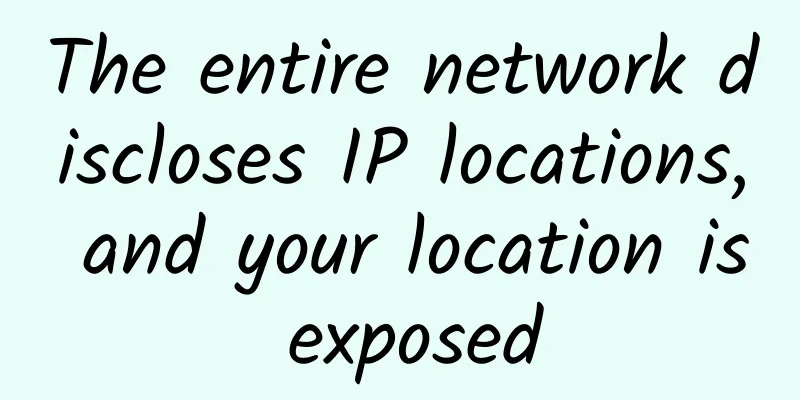Let's talk about 3CC, which is very popular this year

|
The day before yesterday, I published an article about 5G-A in the Greater Bay Area (link), in which 3CC was mentioned many times. After the article was published, many friends left me messages asking for details about 3CC. Today, I will write another article to talk about this technology. What is 3CC3CC, the full name is 3 Component Carriers, three carrier aggregation or three carrier units. (Component means "component, part", and Carrier means "carrier, carrier", 3CC should be literally translated as "three component carriers".) As we all know, wireless communication requires the use of radio frequency bands. The so-called "3CC" means that operators merge their three frequency bands to form a larger frequency band bandwidth, thereby achieving higher speed and capacity. Simply put, it is like merging three different lanes into a wider lane to increase vehicle capacity. 3CC belongs to the carrier aggregation (CA) technology. Speaking of carrier aggregation, everyone should be familiar with it. As early as the 4G era, carrier aggregation has become famous. At that time, the peak downlink speed of FDD LTE was only 150M, and that of TD-LTE was only 100M, neither of which met the rigid requirements of the 4G (IMT-ADVanced) standard proposed by ITU-R (downlink rates above 1Gbps when fixed or moving at low speeds; and above 100Mbps when moving at high speeds). Therefore, 3GPP developed LTE-Advanced (LTE-A), which achieved a rate of over 1Gbps through carrier aggregation technology (up to five carriers can be aggregated), and barely got the "title" of 4G. Traditional LTE is not actually 4G, but 3.9G, or "quasi-4G". Now, we have entered the 5G era and have once again resorted to the trick of "carrier aggregation", no longer for "rectification" (5G NR already meets the ITU's 5G standard requirements), but to make further breakthroughs in indicators. Communication frequency bandwidth is the most important factor affecting the rate. 5G is divided into Sub-6GHz band and millimeter wave band. The millimeter wave band has not been released in China for the time being, and although the 6GHz band (5.925-7.125GHz) will be used for mobile communications in China, there is no sign of its use for the time being. Therefore, when modulation, coding and other technologies have reached their capacity limits, if you want to further increase the connection speed, you can only make full use of the existing frequency band resources (those bands below 6GHz). Domestic operator frequency band distribution map 3CC was born based on this premise. Operators bind their different frequency bands (including co-built and shared frequency bands) to achieve higher speeds. On the one hand, this can meet user needs, and on the other hand, it is also beneficial to brand promotion. Technical highlights of 3CCWhen carrier aggregation (CA) was first proposed, it was divided into three categories: Intra-band adjacent CA: The two carriers belong to the same frequency band specified by 3GPP and are continuous in the frequency domain. Intra-band non-adjacent CA: The two carriers belong to the same frequency band specified by 3GPP, but are discontinuous in the frequency domain. Out-of-band non-adjacent CA: The two carriers belong to different frequency bands specified by 3GPP. As shown in the following figure: Each carrier involved in carrier aggregation is the component carrier mentioned above, which is called component carrier in the industry. Component carriers are also classified. The component carrier that carries signaling transmission and manages other component carriers is called the primary carrier, also called Pcell (Primary cell). A secondary carrier is used to expand bandwidth and increase data rate. The primary carrier decides when to add or delete a secondary carrier, also called Scell (Secondary Cell). Domestic operators have different aggregation solutions for 3CC. China Mobile is currently promoting 700MHz (30M) + 2.6GHz (100M) + 4.9GHz (100M), with a total of 230M bandwidth. China Mobile still has 60M in the 2.6GHz frequency band, which will be gradually used for 5G in the future, becoming 2.6GHz (100M+60M) + 4.9GHz (100M), with a total bandwidth of 260M. China Telecom and China Unicom mainly use the 2.1GHz (40M) + 3.5GHz (200M, including co-construction and sharing) solution. In some places, 2×11M of 900MHz will be added. In some places, only 200M of 3.5GHz is used. According to online news reports, domestic operators have conducted 3CC trials in many provinces and cities, and most of the speeds measured are above 4Gbps. Zhejiang Jiaxing Mobile even has an official report that it exceeds 5Gbps (3CC+1024QAM), which should be the highest downlink speed we have seen so far. As for the uplink rate, combined with the SUL (uplink and downlink decoupling, assisted uplink, super uplink) technology, it can currently generally be measured to be several hundred Mbps or even above 1Gbps (Shanghai Unicom, 1.04Gbps). It should be noted that speed measurement is related to many factors, including the number of surrounding terminals, environmental interference, and whether Massive MIMO or high-order modulation is used. Therefore, it is only necessary to take a look at the speed measurement value, and horizontal comparison is not very meaningful. Careful readers should have noticed that the frequency bands used by 3CC include both FDD and TDD bands. Yes, 3CC has such capabilities and can support "F+T". 3CC can bring about a significant improvement in experience, but it still relies on some technological innovations. The 3GPP R18 standard is about to be officially frozen. This is the first version of 5G-A. In R18, there are several technologies related to 3CC, such as FSA and MB-SC. FSA stands for Flexible Spectrum Access. It can perform intelligent multi-carrier optimization, freely split and flexibly combine the entire uplink frequency band, realize the unification of control channels and unified scheduling of data channels, effectively improve resource utilization and improve uplink experience. MB-SC stands for Multi-Band Serving Cell. It can integrate and reconstruct non-continuous scattered spectrum to form a virtual large bandwidth, which can further improve resource utilization and improve uplink experience. These technologies centrally manage and schedule spectrum resources in different frequency bands, carriers, and time slots, giving full play to the advantages of carrier aggregation. Application scenarios of 3CCAs we mentioned earlier, the most direct effect of 3CC is that it greatly improves the network connection speed, from less than 1Gbps to 3~5Gbps. Even considering the scenario with a large number of users, it is easy to reach an experience speed of more than 1Gbps. The ultra-large bandwidth will further meet the needs of new businesses such as live video streaming, cloud gaming, naked-eye 3D, XR/VR, and bring users a better user experience. The bandwidth and capacity advantages of 3CC will play a huge role in transportation hubs such as high-speed rail stations, subway stations, and airports, as well as crowded places such as stadiums, tourist attractions, and urban villages. At present, the 3CC areas built by operators are also mainly concentrated in these places, and most of them are realized through micro base stations. In the field of industrial Internet, 3CC also has great application value. In scenarios such as intelligent manufacturing, AI detection, remote inspection, and security monitoring, there will be a large number of high-speed terminals or high-definition cameras, which have a demand for transmission rate and bandwidth capacity, which can also be solved by 3CC. While upgrading bandwidth and capacity, 3CC still has the ability to provide differentiated QoS guarantees. In other words, it can intelligently schedule and allocate bandwidth resources according to business levels and service quality requirements to ensure that key businesses receive priority, continuous and stable communication in complex network environments. This is extremely important for vertical industry application scenarios. 3CC actually has another potential hot application scenario, which is FWA (Fixed Wireless Access). Through 3CC, CPE can be provided with greater bandwidth, making it easier for families, tenants, tourists, and small and micro enterprises to quickly obtain broadband access capabilities. Terminals that support 3CCNot all mobile phones support 3CC. At present, any mobile phone that uses Qualcomm X75 baseband and MediaTek M80 baseband can theoretically support 3CC. Taking M80 as an example, it supports 5G NR (FR1) with 3 carrier aggregation (300MHz) and 5G mmWave (FR2) with 8 carrier aggregation. Generally speaking, it supports a maximum downlink rate of 5Gbps and an uplink rate of 1Gbps. Judging from the specific mobile phone models, Honor Magic6 Pro, Xiaomi 14 Pro, vivo X100 Pro, OPPO Find X7, etc. all support 3CC. Other models are awaiting further verification. Apple mobile phones, the current models should not support it. Final WordsWell, the above is the introduction of 3CC. This year, operators will definitely vigorously promote the popularization of 3CC. With the continuous upgrading of 5G-A and more and more new models of mobile phones entering the market, everyone will gradually feel the ultra-large bandwidth experience brought by 3CC. Before the arrival of 6G, unless 6GHz and millimeter waves are released, 5Gbps should be the highest speed we can enjoy. As the old saying goes, fast speed is one thing, and application scenarios are another. I hope that popular applications of 5G/5G-A will appear as soon as possible, so that there will be motivation to promote the continuous evolution of technology. |
<<: Unlocking the full potential of 5G: Innovating with network effects
>>: How to future-proof your home network with FTTR
Recommend
Let's talk about short links
Introduction I am working on a promotion system r...
MIMO technology triples the number of concurrent connections and transmission capacity
NEC announced that it has verified that distribut...
Global 5G patent rankings: Huawei ranks first, ZTE and OPPO perform well
5G technology has been around for more than four ...
How does Beijing’s government cloud build the city’s “strongest brain”?
On July 15, 2016, Huawei's Smart City Ecosyst...
Deutsche Telekom recently successfully tested 5G independent networking
Deutsche Telekom (DT) said it has completed its f...
Simplifying enterprise operations and maintenance: the right network automation strategy is key
[51CTO.com original article] From the development...
You are still 11 certifications away from being an IT boss
There is a saying that success is not difficult, ...
Friendhosting: 2024 promotion 30% off, 13 data center VPS monthly payment starting from 2.1 euros
Friendhosting has frequent promotions at the end ...
Wi-Fi 7: Everything we know so far!
Over the past few decades, Wi-Fi has become the w...
DogYun's fourth anniversary: 30% off on Elastic Cloud/20% off on Classic Cloud, 40% off on new Chongqing Cloud, 10 yuan free for every 100 yuan deposit, 100 yuan off for dedicated servers
Yesterday morning we shared information about Dog...
Analysis of the current status of cloud computing industry development, challenges faced by operators in their layout
Domestic operators are making great efforts to la...
There are two important factors that affect network speed: network bandwidth and network latency!
With the popularization of the Internet, users pa...
Next-generation network management is difficult without AIOps
AI for operations, or AIOps platforms, is the in...
New Infrastructure, New Healthcare, New FutureHuawei discusses the construction of smart hospitals in the new infrastructure era
[51CTO.com original article] As a representative ...









